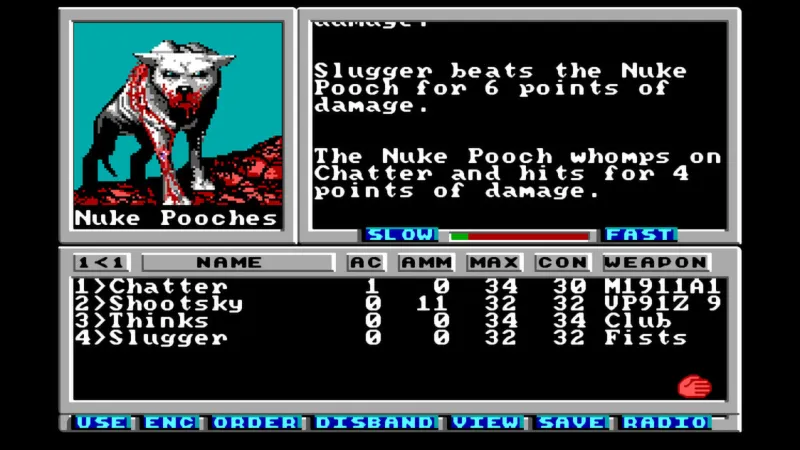


You stand at the threshold. The great metal door shrieks inward under the weight of all that steel and lead before finally shuddering open and rolling to the side. Beacons flash and sirens wail, warning you of the fateful decision you’re about to make. After a lifetime of safety and security in your vast underground home, you’re being forced to leave, and now you’re at the brink. There’ll be no turning back once you’ve made your decision. Sucking in your breath, you summon all your courage and cross the threshold. When you emerge into the sunlight, you see for the first time, what has become of your world after the gleaming Atomic Age ended in nuclear fire.
Since its beginning, the Fallout franchise has been marked by these such occasions. A hero must leave the safety of his or her home and brave the dangers of a vast, unknown world. And with Fallout 76, Bethesda’s latest venture, the developers likewise are striking out into uncharted territory. But Fallout has never been static. Over the decades, as technology and graphics have improved, the game has changed and evolved to fit the times, but through it all, its spirit has remained intact. To truly understand this, however, first we must step out into the Wasteland.

In 1988, Brian Fargo of Interplay Productions introduced the world to Wasteland, a gritty CRPG that swapped the enchanted forests popular for the day’s high-fantasy RPGs for the devastated ruins of a post-apocalyptic Arizona desert. The game followed a foursome of desert rangers, as they killed children, and blew up mutants like blood sausages, but it was innovative for another reason. Wasteland was one of the first games to let you leave a lasting impact on a persistent open world. The story was colorful with its narrative of four desert rangers stopping a deranged army general and lunatic artificial intelligence. And the humor was jet-black. With the freedom to explore, and practically every obstacle accommodating multiple playstyles, the game was, and still is, recognized as one of the greatest RPGs of all time. But when it came time for a sequel, Interplay no longer held the trademark. So, instead the team took the core pillars of Wasteland and created a new post-apocalyptic universe that like nuclear fallout would have far more lasting power than its initial inspiration.
When Fallout launched in 1997 it took what made Wasteland memorable, and with 10 years of graphical improvements, breathed new life into the wastes. Replacing the text-based descriptions of combat, players were now treated to gristly kill animations whenever they blasted a mutant to pulp. Fully voice-acted characters mystified and repulsed players with memorable performances like that of the many voiced, Cronenbergian Master. And whether you played as a hero or villain, the game actually reflected your good (or bad) deeds with alternate endings.
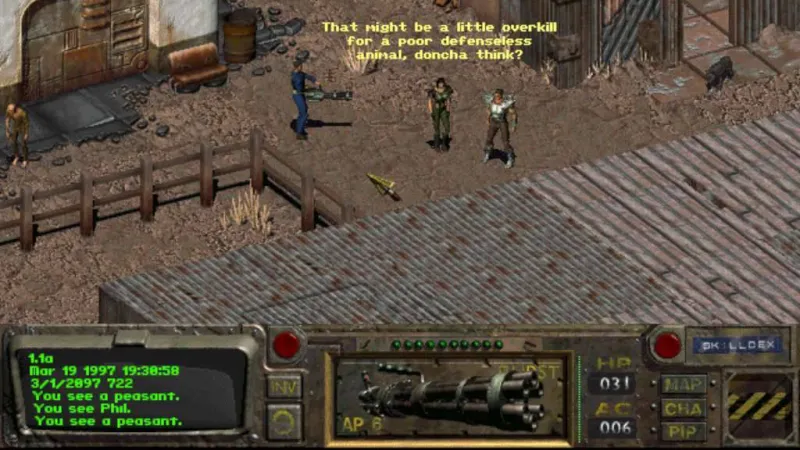
But Fallout also stood apart from Wasteland with a unique retro-futuristic aesthetic and its dark, satire of post-war American culture. Set in an alternate timeline from our own, the wasteland of Fallout’s southern California is drenched in the 1950s Atomic Age aesthetic. In the game’s opening seconds, the series mascot, Vault-Boy, smiles and waves neighborly in a commercial for space in an underground nuclear fallout shelter; the ‘40s tune “Maybe” by The Ink Spots takes on a wholly sinister character against the backdrop of crumbling skyscrapers; and weapons like the plasma rifle vaporize mutants like something out of a ‘50s-era sci-fi flick.
Apart from its look, Fallout also fleshed out much of the franchise’s universe, giving us the technology-obsessed Brotherhood of Steel, the lumbering super mutant, and Ron Perlman’s “War never changes.” It sprinkled its world with a healthy dose of pop-culture references and with its standard-bearer S.P.E.C.I.A.L. system, players had an entire spectrum of playstyles at their fingertips. With this formula, Fallout set the tone for the franchise, and produced the rich lore that all other Fallout games would mutate from.
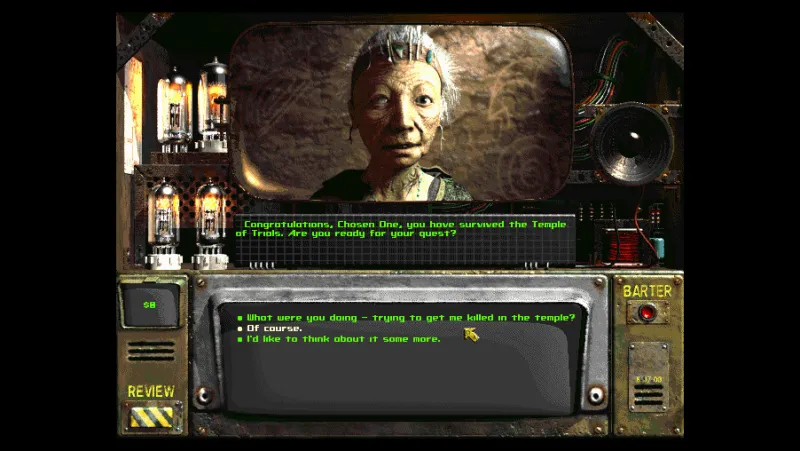
Exactly one year after Fallout’s release, Fallout 2 gave fans a wasteland twice as big to explore, a story that continued after the first, and, well, more of the same. Following the descendant of the first game’s protagonist, players once again blasted or charmed their way through the wasteland, only this time, instead of mutants, they ran afoul of the Enclave – the insidious and heavily armed remnants of the U.S. government. The game gave players more shades of gray and more hilarious dialogue options (including one memorable prank call with an Enclave officer) but apart from the new story, the game didn’t really change that much from the first. After Fallout 2, the series would actually go dormant for a time. Minus a few bizarre spinoffs (see sidebar), fans would have to wait another 10 years before their beloved series reemerged like a new hero rising from a new vault.
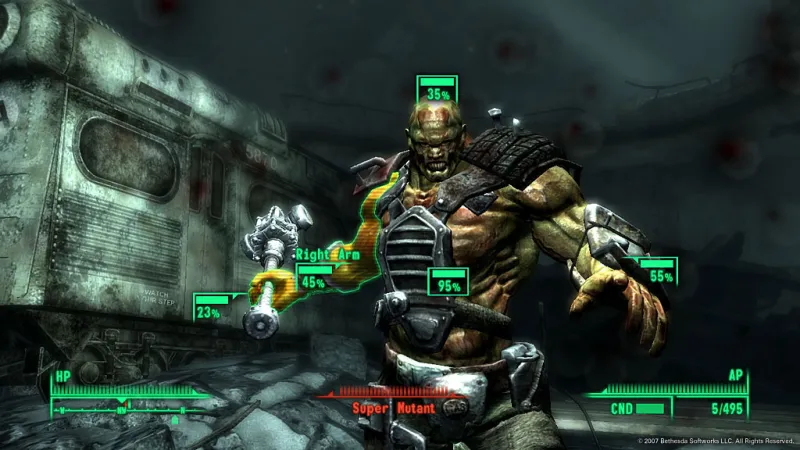
In 2004, Fallout changed hands from Interplay to Bethesda Softworks, and with it the series made the great leap from isometric turn-based RPG to 3D open-world RPG. While some fans were afraid of an “Elder Scrolls with guns,” many were excited by the announcement. Brian Fargo of Wasteland fame felt they were well-suited telling us in 2007, “There are not that many companies that could take that legacy and run with it. I think they’re a great fit.”
When Fallout 3 launched in 2008, fans collectively held their breath as they emerged from the vault to witness all the blasted heath and rubble-strewn devastation of a 3D Fallout game. For the first time in the Fallout series, players could go anywhere without the restrictions of a turn-based system. Players could waltz through the mutant-infested National Mall in Washington D.C., look up at the towering Washington monument, then whip out their fatman portable nuclear bomb launcher and wipe out whole gangs of mutants in real time. V.A.T.S. allowed players to freeze time and target an enemy’s individuals body parts just like in the originals. And modding empowered fans to go in and reshape the wasteland in any way they saw fit, ensuring that the game would far outlast its initial release.
Besides the fact that it was now in 3D and in the hands of a new developer, classic Fallout was back. Though the game ended the series’ child-killing days, it didn’t matter because there was still a vast, irradiated wasteland to explore brimming with quests, gallows humor and moral conundrums. Fallout 3 even managed to do what the first games couldn’t – secure the license for The Ink Spots’ “I Don’t Want To Set The World On Fire,” coloring the world in that dark ‘50s aesthetic as players explored the decaying ruins and blasted outskirts of the Capitol Wasteland. Despite an outspoken minority who decried some of Bethesda’s changes, Fallout 3 proved that the Fallout universe could not only survive but thrive in the modern console era. For every cynic the game produced, a new fan discovered the bliss that was the game’s deep character-building and sprawling, open wasteland. For bringing Fallout to the next generation, Fallout 3 won multiple game of the year awards, and guaranteed many more 3D Bethesda-made Fallout games to come.

Surprisingly, though, for its next title Bethesda did the unexpected, and handed the reins over to grizzled Fallout veterans, Obsidian Entertainment for Fallout: New Vegas, a game promising all the new hardware of a Bethesda game, but with the spirit of a classic Fallout:
“For Bethesda’s games, dialogue is important,” CEO Feargus Urquhart told us back in 2010. “For our games it’s been vital. We put more energy into it automatically because it’s kind of the thing that we do, whereas they put more energy into other things.”
Returning Fallout to the West Coast, New Vegas resurrected some of the hardcore RPG elements that were missing from Fallout 3. Bringing back richer, more-branching dialogue trees that revolved around your skills, colorful new factions, and a reputation system. New Vegas was more accommodating to old school fans, and introduced new players to the original Fallout formula. With its sun-drenched, new setting in the Mojave Wasteland and highly replayable gameplay loop, New Vegas gave players hundreds of reasons to replay the game, and above all reminded many that it wasn’t just gory combat or graphics that made Fallout worth playing. Unfortunately, much of this progress would be reversed when Bethesda resumed development for the next Fallout and took the series in a new direction.

With the success of Fallout 3 and Fallout: New Vegas, fans were burning for their next post-apocalyptic fix, so when Fallout 4 finally dropped in 2015, it dropped like an atomic bomb. Selling over 12 million units at launch, Fallout 4 marked the series’ entrance into the current generation of consoles and offered much improved gunplay, base-building, and deeper crafting. With these new elements, the game made the series more accessible than ever, and brought a wider audience to the wasteland. But at the price of diluting its RPG elements, Bethesda also turned off some of its core fans.
With games like The Witcher 3: Wild Hunt releasing that year, Fallout 4 didn’t look like the next-gen sequel fans had been waiting for and with its last-gen engine, the game also didn’t seem to innovate much from Fallout 3. Dividing players even further was the fact that for the first time in a Fallout game, players took control of a fully voiced protagonist. And even more disconcerting, Fallout 4 did a complete 180 after New Vegas and reduced one of the series’ most memorable elements – its dialogue – to a four-button prompt. Despite its commercial success, more than ever, fans were starting to worry that Bethesda was mutating their beloved franchise into a different beast entirely with a focus on combat and not roleplaying.
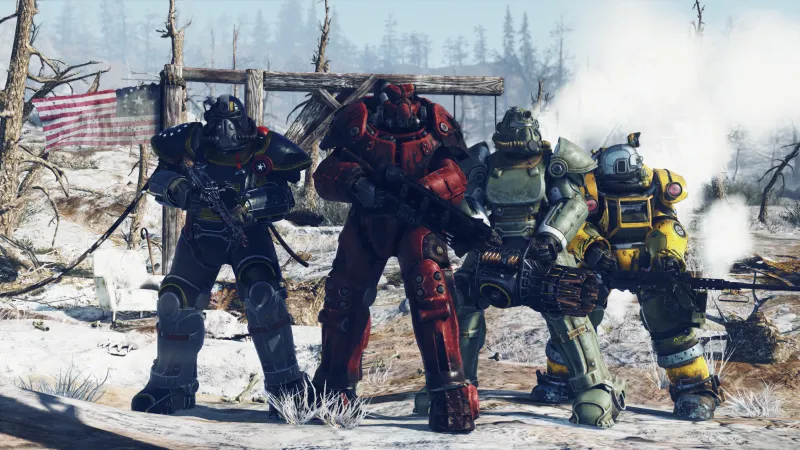
Fans were already skeptical about where the franchise was going, so it didn’t help when at this year’s E3, director Todd Howard announced that Fallout would be entering the online multiplayer space with Fallout 76.
“Like many of you, we have always wanted to see what our style of game could be with multiplayer.” Howard said from atop this year’s E3 stage, “so about four years ago we hit upon an idea that’s perfect for Fallout. Open-world survival. Every person and character is real.”
Dropping players in an irradiated West Virginia four times as large as Fallout 4’s Commonwealth, for the first time ever players can explore the wasteland with friends. But in this new landscape, dialogue is dashed and exploration, combat, and looting are paramount. Monsters based on West Virginian folklore may roam the irradiated hills, but when compared to Fallout of yore, some fans have said the new Appalachia feels empty. Sure, the title has stimpaked in new content like the ability to launch a nuclear bomb at an area of the map, but much of what makes a Fallout game unique has been sacrificed for multiplayer, and this fact has not been lost on the Fallout faithful. Regardless, fans have been asking for a multiplayer Fallout for years, and with all the other single-player titles embracing multiplayer like Rockstar’s Grand Theft Auto Online and Bioware’s upcoming Anthem, now is the ideal time for Fallout to test the waters.
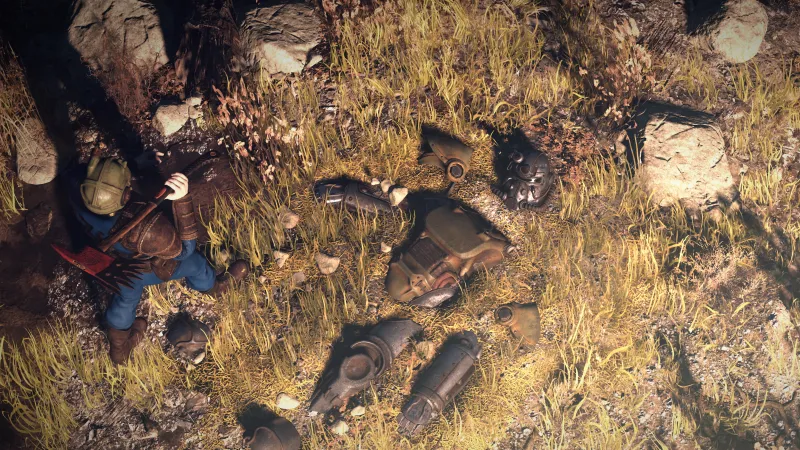
As of today, Fallout 76’s “Break-It Early Test Application” has come and gone, and its launch is here. As is expected of Bethesda titles these days, the game had a few nasty bugs, but such is the point of a beta, and Bethesda has been very upfront about that. With Fallout 76, the series is changing, but over the years, Fallout has developed many new mutations in order to keep its core DNA alive. In many ways the game is a survivor, no different from the hardy beasts that roam its radioactive worlds. Whether Bethesda’s step into the multiplayer space is a step in the right direction remains to be seen, but if history is any indicator, the spirit of the series will survive any type of fallout.

Explore your favorite games in premium print format, delivered to your door.